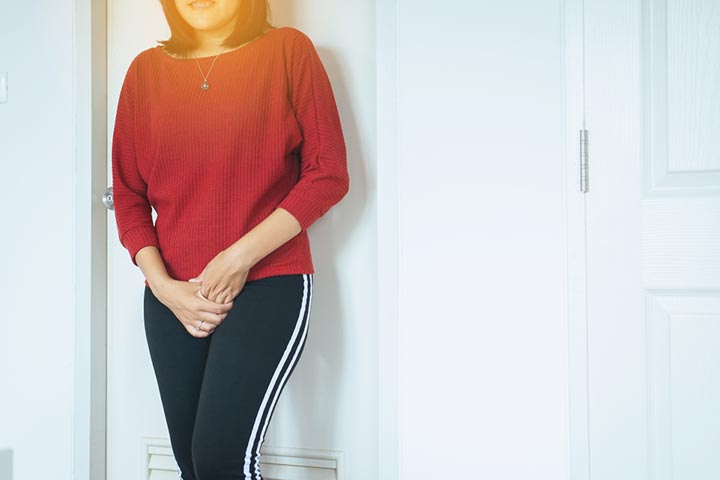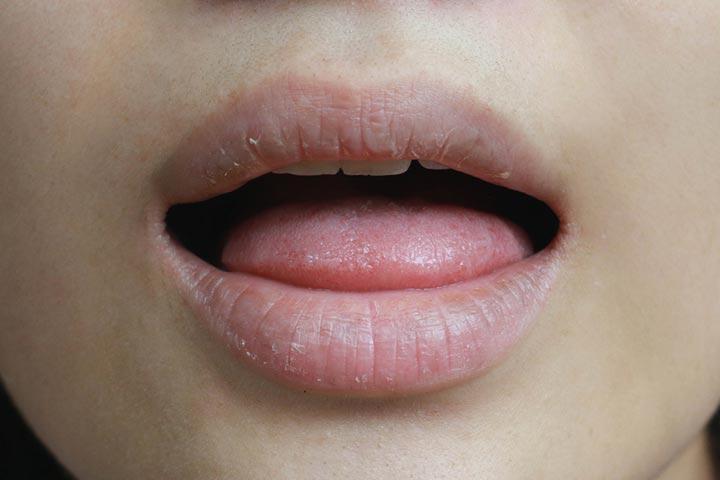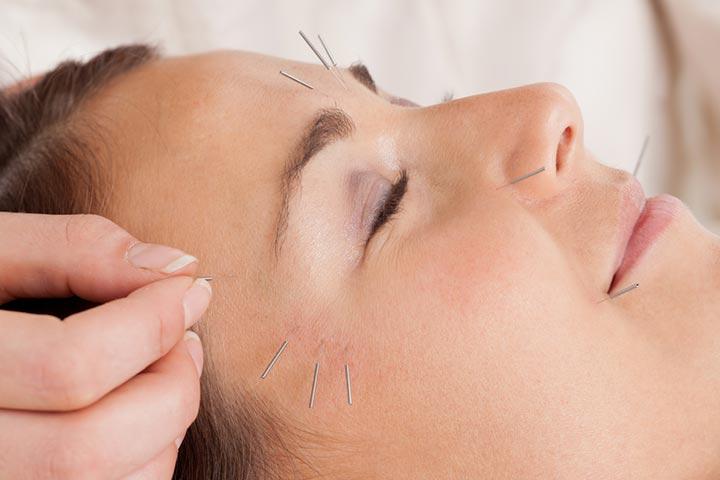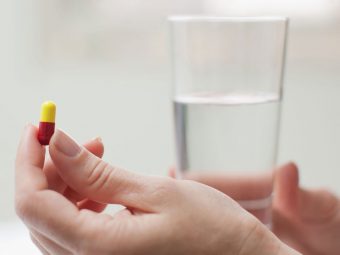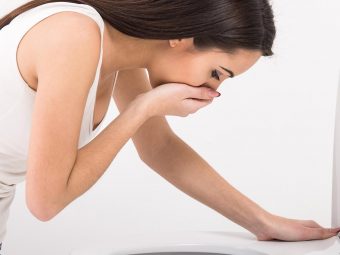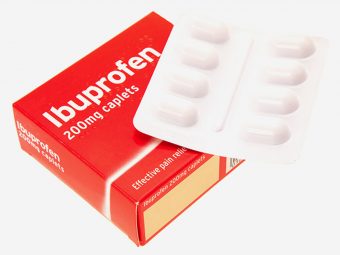
Image: ShutterStock
Botox is one of the most sought-after cosmetic treatments that help reduce the appearance of fine lines and wrinkles on the face. But while this beauty treatment is generally safe, can you get botox when breastfeeding?
Botox is a generic name for an injectable drug prepared from a purified toxin called botulinum toxin type A. Some other names for this toxin are botulin A, botulinum A, and onabotulinumtoxinA. The botulinum toxin type A is a toxin produced by Clostridium botulinum bacteria (1).
Generally, only a small amount of the toxin is used in various medical and cosmetic preparations, which is unlikely to cause adverse effects. Nonetheless, since your baby’s health depends on you during lactation, knowing all about botox before trying is a safe choice.
This post provides you with more information about the safety of botox during breastfeeding and alternatives you may consider.
What Are The Uses Of Botox?
Botox may help in the treatment of a variety of health conditions. Below are some of the conditions and problems where Botox could be used as a remedy (1) (2).
- Chronic headaches, such as migraine
- Chronic or deep wrinkles
- Urinary incontinence
Image: Shutterstock
- Strabismus (crossed eyes)
- Cervical dystonia (involuntary contraction of neck muscles in abnormal positions)
- Upper limb spasticity (overactive arm and hand muscles)
- Severe axillary hyperhidrosis (excessive underarm sweating)
- Blepharospasm (involuntary blinking or twitching of eyes)
 Expert says
Expert saysHow Does Botox Work?
Botox injection causes temporary paralysis of muscles by blocking signals from nerves to the targeted muscle (3).
Our brain sends signals to the nerve cells to initiate a muscle contraction. In response, the nerve cells release a neurotransmitter called acetylcholine, which conveys the message to the targeted muscle, resulting in muscle contraction. Botox inhibits the release of acetylcholine, preventing the muscle from receiving the message. As a result, the muscle relaxes, ceasing any movements or contractions.
Since Botox relaxes muscles, it is often used in treating conditions that involve muscle spasms or abnormal or undesired muscle contraction (4).
 Point to consider
Point to considerSafety Of Botox While Breastfeeding
There is currently no research about the safety of Botox treatment during breastfeeding. In general, botulinum toxin A might find its way to breast milk through blood. However, it is likely when a person is experiencing botulism, a severe infection caused by the botulinum bacteria.
Since only a small amount of purified bacterial toxin is injected during the Botox procedure, the chances of the toxin entering mothers’ milk are slim. Still, due to the absence of any conclusive studies, it is best to avoid Botox injections while breastfeeding (5).
Doctors may avoid prescribing Botox treatment if you are breastfeeding, and the treatment may only be conducted in rare cases (6). In most cases, alternatives to Botox could be available. It is best to avoid Botox for cosmetic reasons when breastfeeding.
Side Effects For Breastfeeding Mothers
There is no information about the secretion of botulinum toxin type A in breast milk. Therefore, the side effects on the nursing infant are unknown.
A mother who underwent Botox treatment may experience the following side effects (2) (7).
- Bruising, redness at the site of the injection
- Fatigue
- Dry mouth
Image: Shutterstock
- Dizziness
- Skin rash
- Flu-like symptoms
- Difficulty in breathing, swallowing, or talking
- Problems with vision such as blurred vision, double vision, or drooping eyelids
- Loss or change of voice (voice may become raspy, hoarse, or weak)
- Muscle weakness
- Urinary incontinence (loss of bladder control)
- Slurred speech (an issue with clear pronunciation of words)
Can Pumping And Dumping Reduce The Effects Of Botox?
Pumping and dumping is a technique of expressing breast milk and discarding it instead of feeding it to the infant. Many mothers pump and dump breast milk if they believe they have ingested a substance that may pass into breast milk and reach the baby. However, pumping and dumping cannot eliminate the substance from breast milk. The substance will continue to be secreted in breast milk until entirely metabolized by the body.
The exact metabolism time for Botox in the body is unknown. Its effect may last for about 8-12 weeks (3). Also, the passing of Botox in breast milk has not been studied. Hence the pumping and dumping method may not work in this case.
Guidelines For Preventing The Serious Effects Of Botox
Image: Shutterstock
Taking certain precautions may help prevent serious side effects of Botox. Here are a few things to keep in mind (2).
- If you are breastfeeding and need Botox for a medical condition, seek the advice of an experienced doctor who is an expert in your medical problem. Understand the benefits and risks to make the right decision.
- It is best to avoid the risk of getting Botox for cosmetic purposes if you are breastfeeding. Check with the doctor for alternatives.
- Inform your doctor about the other medications you take. Make sure to include prescription, non-prescription, multivitamins, or herbal medications.
- Tell your doctor if you have been taking allergy medicines, including for asthma, sleeping pills, muscle relaxants, cold medicines, antiplateletsiXDrugs that prevent platelets from sticking together and forming clots in the arteries , anticoagulantsiXBlood-thinning drugs that prevent clot formation and are prescribed for conditions such as atrial fibrillation and deep vein thrombosis , or took an antibiotic injection recently.
- Let your doctor know if you have taken any form of botulinum toxin in the last four months. Share the details of your past Botox injections, too.
- If you have a history of allergies to any medicine or had an allergic reaction recently, do share it with the doctor.
- Your doctor should know if you plan to have any surgery or have had any surgeries in the past.
Safe Alternatives To Botox For Breastfeeding Moms
The alternatives to Botox could vary based on the problem, the intensity of the condition, and your overall health. Discuss the other options with your doctor.
Below are some alternatives that may be considered for a few conditions that are often treated with Botox injections.
- Acetaminophen (Tylenol) and ibuprofen (Motrin) are a few lactation-safe medicines for migraine (8). Do take a prescription from a doctor to avoid overdose.
- Overactive hand and arm muscles and muscle spasms could be managed with physical therapy, occupational therapyiXTreatment that helps people with sensory, physical, or cognitive issues to improve their ability to perform their daily tasks , or regular massages (9).
- You may consider facial cosmetic acupuncture (FCA) instead of Botox to reduce wrinkles and improve skin elasticity. The method involves the insertion of acupuncture needles in the head, face, and neck (10).
Image: Shutterstock
- Topical, over-the-counter cosmetic products, such as creams, may also help reduce wrinkles and improve your skin tone.
- Eating a wholesome diet, sleeping for seven to nine hours at night, and drinking adequate water can also rejuvenate the skin.
Frequently Asked Questions
1. Are there any age or health restrictions for botox use while breastfeeding?
There are no specific age or health limitations for Botox use during breastfeeding. Speak to your doctor to determine if you need to consider your health and age before getting botox.
2. Can breastfeeding mothers who have had botox get any vaccines?
Your eligibility to get vaccinated after botox administration depends on several factors, such as the botox dosage, the injection site, and the vaccine type you wish to get. In most cases, your doctor will provide you with a list of dos and don’ts, including the medicines and vaccines you may need to avoid after botox administration.
Botox has its reputation as a cosmetic drug that reduces the wrinkles and fine lines of aging. But, it is also used to treat several other medical conditions such as urinary incontinence, migraines, upper limb spasticity, and much more. However, there is limited research on the effects of botox while breastfeeding. If the botox treatment is for non-cosmetic purposes, consult your doctor to understand the pros and cons of the injection. Yet, there could be the possibility of the bacteria reaching your baby through milk, so doctors may not suggest a botox treatment during the nursing stage.
Infographic: Things To Know Before Taking The Botox Treatment
Botox effectively treats several medical and non-medical ailments; nonetheless, there are apprehensions about its safety while breastfeeding. Yet, if you have been thinking about getting a botox treatment for a medical cause, this infographic can be your guide to learning the things to consider before going for the intervention. Illustration: Momjunction Design Team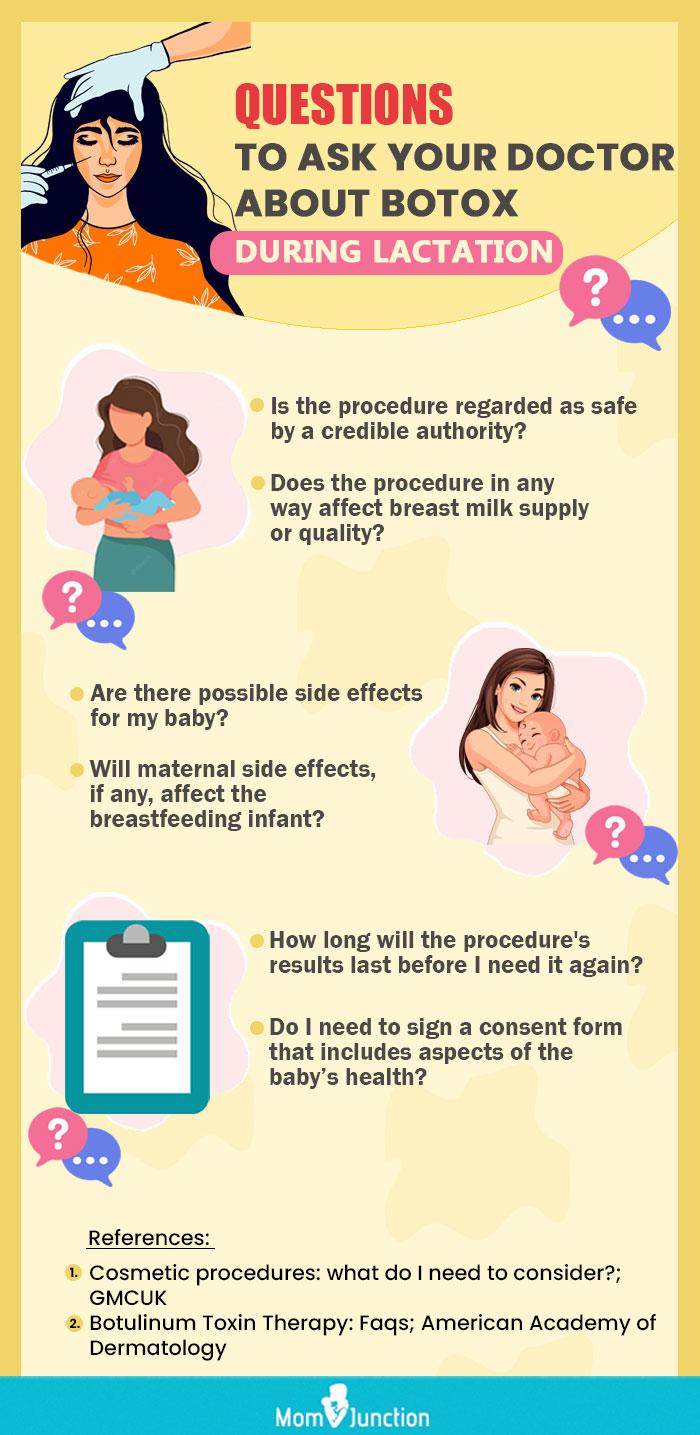
Get high-quality PDF version by clicking below.
Download Infographic
Key Pointers
- The chance of botulinum toxin entering breast milk from a purified botox injection is narrow. However, you may avoid botox while breastfeeding due to a lack of conclusive evidence on its safety.
- After getting botox injections, side effects such as fatigue, dry mouth, dizziness, skin rashes, and weaknesses are often seen in nursing mothers.
- You may postpone using botox for cosmetic reasons to the post-breastfeeding phase.
References:
2. FDA.; Botox Label
3. Indian Journal of Dermatology; Botulinum Toxin NCBI
4. American Academy Of Facial Aesthetics; BOTOX Procedures: What is BOTOX & How Does it Work
5. LactMed Botulin A U.S. National Library of Medicine
6. Moorfield’s Eye Hospital; Botulinum toxin injections for strabismus (squint) during pregnancy and breastfeeding FAQ’s
7. Bakheit AM,; The possible adverse effects of intramuscular botulinum toxin injections and their management U.S. National Library of Medicine
8. American Migraine Foundation; Migraine Treatment and Breastfeeding
9. American Association of Neurological Surgeons; Spasticity
10. Hindawi;Effect of facial cosmetic acupuncture on facial elasticity: an open-label, single-arm pilot study NCBI
11. The Surprising Uses of Botox Penn Medicine
12. P K Nigam and Anjana Nigam; Botulinum Toxin; Indian Journal of Dermatology (2010)



